How to turn on the gas boiler: manual and useful recommendations for use
Gas boilers are simple and convenient to operate, do not cause maintenance problems, effectively cope with their functional task. They are bought much more often than electric and solid fuel analogs, but not everyone knows that before you turn on the gas boiler in an apartment or private house, you need to carry out preparatory measures.
In the article presented by us you will find useful information about the launch of the gas unit and the rules for preparing it for the upcoming work. We will talk about the features of filling the heating circuit with water. We will show you how to enable and select the settings you need.
The content of the article:
Pre-launch process
The sequence of steps to prepare for start-up depends on the type of gas boiler being installed. It can be single-circuit or double-circuit, with a closed combustion chamber or open, floor or wall. The first launch is always associated with an increased level of responsibility and risk, so it must be carried out in compliance with all the nuances and subtleties.
The instructions for the gas boiler contain simple explanations according to which you need to run a specific model. The gas boiler should be connected to communications by this moment in accordance with the agreed project. The first start is carried out after connecting the heating system into a single unit and installing equipment, radiators, pipes.
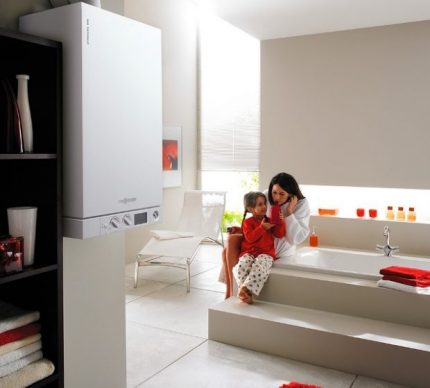
According to fire safety rules, a gas boiler should be located in places protected from the possibility of ignition, away from flammable objects and materials. In this case, the heat generator should be located at a certain distance from the wall and floor. The exact value of the distance is individual for each boiler and is indicated in the instructions.
Wall-mounted models are hung on the anchor so that a small gap remains between them and the wall plane. Installation of the boiler must be carried out strictly evenly in water level. Skews and inclinations of the equipment are not allowed.
After mounting the gas boiler to the wall, it is necessary to connect the device to a pipe supplying cold water. To do this, remove the plugs from the receiving pipes.
In addition, a coarse water filter and a mud filter are placed at the inlet of the communications to the boiler, which will protect the unit’s internal pipeline from clogging and sedimentation. Ball valves are installed on all nozzles during piping.
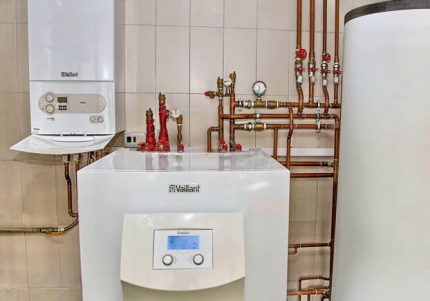
Before starting the boiler, an important step is to conduct a gas pipe to it. This work is not carried out independently. I’ll have to invite the masters from the GORGAZ department with whom you have been concluded service contract.
Gas workers will calculate the required length of the pipe, lay it, install a gas meter and seal it. In order for the device to work for a long time and not smoke, you need to take care of supplying good gas.
Also, for a gas boiler, for safety reasons, it is advisable to conduct a separate power line with its own installed machine at the entrance. Close to the device, at a distance of 30-50 cm from the case, you should position the outlet. It is necessary to make grounding, it will protect users from receiving electric shocks during breakdown on the case.

The boiler installed in a private house is equipped with its own chimney. It should go outside through the wall or through the attic space into the street. Chimneys of boilers in urban houses up to five floors are connected to a public smoke mine.
Depending on the specific device, the amount of work required to carry out the chimney changes. Some devices with a closed chamber are also equipped with a pipe for supplying air to the combustion zone.
Upon completion of all preparatory work, it is necessary to fill the heating system and the boiler itself with cold tap water. After filling, the system is checked for leaks. Then, a remote control panel and a thermostat are mounted on the wall, to which temperature sensors are connected.
Features of filling the system with water
Before igniting a gas boiler and activating the system, you need to properly fill the heating system and all its elements with water. To start filling the heating equipment and the circuit connected to it with water, first the boiler is disconnected from the power supply. It is still necessary to shut off the gas supply.
Next, you need to let the water open by opening a valve or faucet that supplies cold water, as well as a make-up valve located at the bottom of the boiler. The exact location of the make-up tap is indicated in the instrument manual.
The master checking the system must bypass all the rooms along the pipes and radiators and check for the presence of water leaks. If a smudge is found, then you need to shut off the water supply and fix this problem.
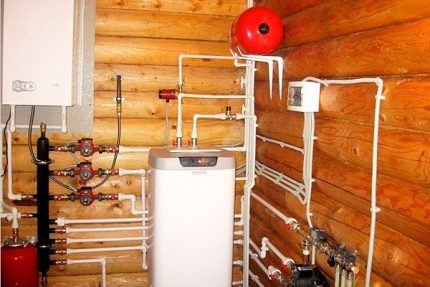
You can drain the system completely or shut off the corresponding link. Then you need to untwist the leaking pipe connection, drain the water or screw in the cork. After the necessary material and tools are prepared, the plugs are unscrewed, and the pipe is again tightly connected to the radiator using sealant.Next, you need to check the tightness of the system again.
The intake of water is accompanied by a characteristic sound. It is important to slowly and gradually unscrew the valve, avoiding sudden movements. If you open the tap sharply, then there is a high probability of air traffic jams. Simultaneously with filling the system with water, the pressure gauge of the gas boiler shows the current pressure in the system.
The working pressure must be found in the instructions for use of the boiler. When the pressure reaches the operating range, stop the water supply by shutting off the valve. Usually the working range of the boiler is a pressure value of 1.5 - 2 atmospheres.
It is recommended that the system be filled with water in the warm season. If the outside temperature is minus, then you should first warm up the room with a portable radiator to about 20 degrees Celsius.
Air Removal
Upon completion of the filling phase, the system must be checked for air jams, blow air and, if necessary, add cold water. If you do not let the excess air out, then the radiators will not heat up enough, as they will have a space that is not filled with a heated coolant.
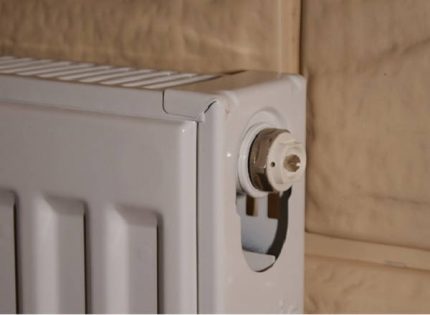
For the first start to be successful, you should go around each radiator with a screwdriver or other tool and bleed air from the heating devices. Some batteries are equipped with an air vent for this procedure. Mayevsky cranewhich can be controlled by hand.
Air from the pipe system and the heating devices connected to it is discharged until water flows. As the air goes, a characteristic hissing sound is made.
For convenience, it’s worthwhile to prepare a basin or ladle in which the water will merge, as well as a rag, which is then carefully covered with a trickle of water so as not to stain the wall or nearby appliances. After the air is released, tighten the radiators tightly so that no water leaks out of them.
Modern boilers are equipped with devices that automatically remove air jams from the heating system. However, such devices do not always cope effectively with their task. Therefore, you often have to bleed air by hand.
Having completed the bleeding of air from a closed heating circuit, they begin to fill the space freed from air plugs with water. Without this operation, there will be no working pressure in the system, because it is not full enough.
To replenish the circuit with water, the unit is connected to the power supply and the feed tap is opened and the “Power” button is pressed. In this case, the pump should start and the boiler burner will try to ignite. However, after a couple of seconds, the electronics will block all attempts, and the error code will appear on the display, because gas does not enter the nozzles.
This procedure will need to be repeated several times. It will be necessary to energize until all air comes out of the pipes and devices of the boiler, as well as the circuit connected to it. When the stage of filling the system and freeing it from air plugs is completed, you need to check the pressure and open the gas supply.
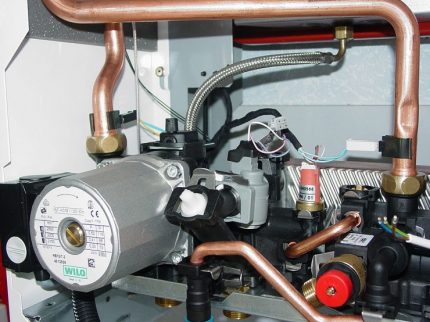
Before igniting the boiler, the gasman carefully checks the compliance of the connection scheme with the design solution, on the basis of which it was assembled. The wizard once again makes sure that the pressure in the system meets the parameters recommended by the manufacturer. Tests the tightness of all communication lines and their connection nodes.
Check and flush the system
In order to verify the high quality of the work performed and to prevent possible water leaks, plumbers recommend that before starting the boiler crimping system. This procedure will require expensive equipment - a discharge pump. However, there is no need to buy it, so it will be needed only for half an hour to check the system.
Such a device can be borrowed from friends or rented. You can also use the call wizard service, which will independently check the system and correct problems if necessary.
The purpose of crimping is to identify leaks in the system and eliminate them. A system that has passed this process will be guaranteed to serve for a long time and will not fail at the most inopportune moment.
There are two methods of crimping: a water column or using compressed air. The essence of the procedure is the injection of air or water into the system to establish a pressure level higher than the working pressure in it by about one and a half times. After the injection, it is necessary to fix the pressure value on the manometer and wait 10 to 15 minutes.

If at the end of this period of time the pressure remains at the same level, then the system is considered oppressed and free of leaks. If the pressure decreases, then you need to identify the place where water seeps and eliminate this problem. Then carry out the procedure again.
Note that before installing a new unit, flushing the circuit, operated for several years, must be done. All manufacturers gas equipment they warn that the installation of a gas boiler in an old circuit that is not cleaned from mineral deposits is prohibited. If the rule is not observed, the owner of the boiler loses its guarantees.
This process is carried out in two stages. Initially, a rough wash is carried out. In this way, the largest contaminants are removed. The pressure in the system during flushing should be about 3.5 atmospheres. After stirring up water under pressure, it descends from the system through the drain cock.
In this case, the coarse filter is often clogged. It may have to be washed once or twice. Fine flushing is carried out using pressure pumps.
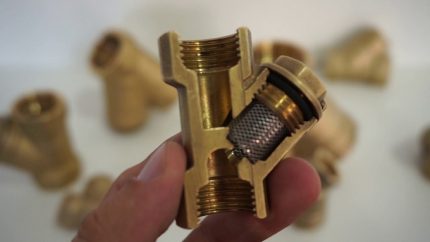
After carrying out the preparatory work, you can begin to start the device.
Turning on the gas boiler
A prerequisite for warranty service of a gas boiler is the first inclusion exclusively by the master from the gas service. If user follows all instructions and safety measures at independent start-up, you can also count on the reliability and durability of the heating system.
The initial start-up of the wall-mounted boiler is carried out strictly after checking the following points.
First of all, you need to make sure that the gas pipes are tight when the gas cock is closed and open. If no gas flow is recorded within 10 minutes after connecting all the pipes, then it can be argued that the system is tight.
Gas supplied from the main pipeline must comply with the requirements specified in the instructions for the boiler. When transferring the unit to the processing of liquefied mixtures, nozzles must be changed in advance.
You also need to check the pressure level in the system. It should be as recommended. Check the air intake and carbon dioxide exhaust pipes for blockages.
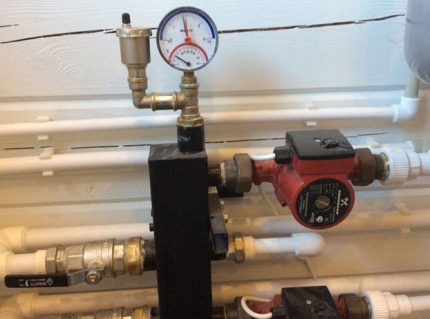
It is necessary to make sure that the room with the boiler has a working ventilation system. Additionally, a safety smoke pressure switch is checked.
After the preliminary work, the boiler start-up procedure follows:
- The gas boiler is connected to the network, open the gas supply to the device;
- Check that all valves at the inlet and outlet of the coolant in the unit are open;
- Press the button or turn the switch on the dashboard of the boiler, depending on the method of inclusion specified in the instructions.
You can adjust the temperature using the appropriate buttons. Working in automatic mode, the boiler independently turns on the burner if it is necessary to heat the water in the system. If the boiler is double-circuit, then in case of turning on hot water, the burner automatically turns on for heating.
On the boiler display, after the initial start-up, it is recommended to configure all parameters of the boiler. The instructions usually indicate the sequence of necessary actions.
The interlock system shuts off the gas supply if the burner does not ignite for about ten seconds. At the first start-up, it may be necessary to remove the ignition lock due to the presence of air in the gas line. It is necessary to wait until the air is displaced by gas. The lock is released when the device is restarted.
To start the floor gas boiler, you need to carry out the same preparatory procedures as for the wall. Before starting directly, you need to ventilate the boiler room, make sure that all the faucets of the heating pipes are open and that there is draft in the chimney. Traction can be checked using a piece of paper.
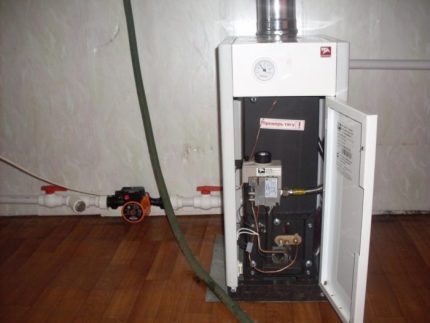
Turning on the floor boiler:
- The door of the device opens, the position of the boiler control handle in the off position is checked.
- The gas supply valve opens.
- The control knob is set to the piezo ignition position.
- Next, press the knob for 5 to 10 seconds so that the gas passes through the pipes and displaces the air. The piezo ignition button is pressed.
- Then the flame in the burner is checked. If the burner is not lit, the procedure is repeated.
After ignition of the main burner, the heating temperature can be adjusted using the control knob.
Important operating rules
In terms of operation, gas boilers with a closed combustion chamber are considered safer. Their firebox does not communicate with the room air. However, the power of such boilers is significantly inferior to the power of boilers with an open combustion chamber. Therefore, in private households, a second type of boiler is often installed.

The operation of such boilers requires compliance with safety regulations. So, to equip a powerful floor-standing boiler, it is customary to use a separate room with certain sizes. The boiler is mounted at a certain distance from the walls. Nearby walls must be protected by refractory material to prevent ignition.
In the boiler room it is necessary to carry out a ventilation system. There should also be a source of natural light. The width of the front door must be at least 80 centimeters. The chimney is laid in accordance with the instructions for the boiler and made of heat-resistant material. The chimney should rise above the ridge of the roof by at least half a meter.
One of the security measures is to establish carbon monoxide sensors. The gas detector will detect leakage of volatile toxin in a timely manner and warn users about it. It can also be configured so that ventilation is automatically turned on and the gas supply is turned off.Modern automation allows you to implement a variety of smart systems.
If the temperature, pressure or gas contamination sensor is out of order, you must immediately turn off the boiler and call the master from the after-sales service. Using the boiler without these devices is fraught with serious negative consequences.
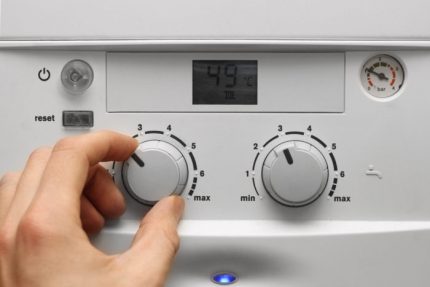
If signs of gas leakage are found, immediately turn off the gas tap and open the windows to ventilate the room. Do not turn on the light and try to light the room by lighting matches or a lighter.
The gas boiler must be serviced at the intervals specified by the manufacturer. Data on the necessary procedures are indicated in the instructions for the device. For example, you need to clean the chimney, descale the heat exchanger, or clean the burner from the burner. Then the boiler will last a long time, and the risk of serious malfunctions will be significantly reduced.
When using a gas device, do not turn it on at maximum power for a long time. This can lead to steam generation, which is unacceptable.
Sometimes the boiler starts to make unusual noises and vibrations. This may be due to the operation of the fan. We warn that all actions for which it is necessary to disassemble the boiler cover will automatically deprive the owner of the right to warranty repairs or replacements.
However, the owner of the unit needs to control the operation of mechanisms and systems that protect the boiler from fire. It is necessary to maintain the temperature in the circuits at around 50 degrees, which significantly reduces the likelihood of mineral deposits on the inner surfaces of pipes and devices.
Conclusions and useful video on the topic
How to pump up pressure in the expansion tank:
How to start a gas boiler:
Putting a gas boiler into operation is a responsible and difficult job. In order for the device and the heating system to work for a long time, a number of important requirements must be observed. After combining the system into a single whole, you need to check its tightness. If water leaks through pipe connections, pressure will constantly drop.
Connecting a gas pipe also requires a leak check. When turning on the boiler, it is necessary to strictly observe safety precautions, since working with gas equipment involves an increased risk.
Want to share your own experience in the field of connecting a gas boiler and preparing it for the first launch? Do you have useful information on the topic of the article? Please leave comments, ask questions, post photos in the block form below.

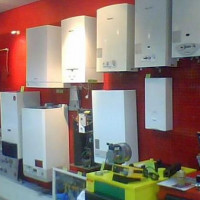 What is better double-circuit or single-circuit gas boiler: features of the device and operation
What is better double-circuit or single-circuit gas boiler: features of the device and operation 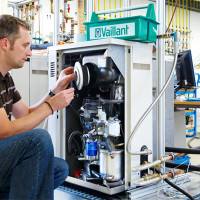 Why the gas boiler is noisy: why the unit is buzzing, clicking, whistling, clapping + how to fight
Why the gas boiler is noisy: why the unit is buzzing, clicking, whistling, clapping + how to fight 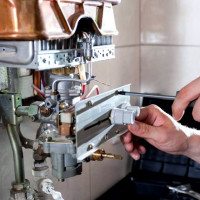 How to turn off the gas boiler for conservation: methods, detailed instructions and safety requirements
How to turn off the gas boiler for conservation: methods, detailed instructions and safety requirements 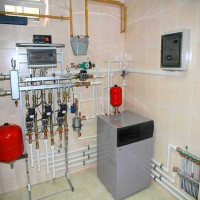 What to do if the gas boiler blows in the wind: causes of the boiler attenuation and methods for resolving the problem
What to do if the gas boiler blows in the wind: causes of the boiler attenuation and methods for resolving the problem 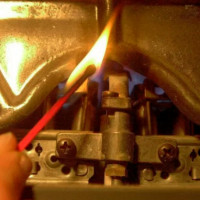 Why does the gas boiler go out? Overview of typical faults and how to solve them
Why does the gas boiler go out? Overview of typical faults and how to solve them  Which is better and more profitable - a gas or electric boiler? Arguments for choosing the most practical option
Which is better and more profitable - a gas or electric boiler? Arguments for choosing the most practical option  How much does it cost to connect gas to a private house: the price of organizing gas supply
How much does it cost to connect gas to a private house: the price of organizing gas supply  The best washing machines with dryer: model rating and customer tips
The best washing machines with dryer: model rating and customer tips  What is the color temperature of light and the nuances of choosing the temperature of the lamps to suit your needs
What is the color temperature of light and the nuances of choosing the temperature of the lamps to suit your needs  Replacement of a geyser in an apartment: replacement paperwork + basic norms and requirements
Replacement of a geyser in an apartment: replacement paperwork + basic norms and requirements